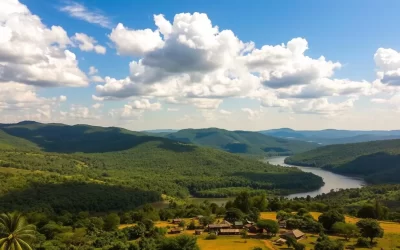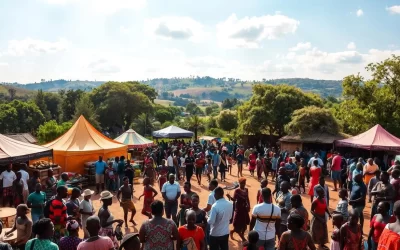Nestled in the heart of Africa, this diverse country boasts a rich linguistic landscape. English serves as the official language, playing a key role in government, education, and business. Meanwhile, Chichewa, a Bantu language, holds the title of national language and is spoken by about half of the population.
Language in this region reflects its history and culture. From colonial influences to post-independence changes, the way people communicate has evolved. Today, over 16 living languages are spoken across the land, each adding to the nation’s unique identity.
Understanding this linguistic diversity offers insight into daily life, family connections, and regional traditions. Whether you’re a student, traveler, or business professional, exploring these languages opens doors to deeper cultural appreciation.
Introduction to Malawi’s Linguistic Diversity
Step into a world where over 13 major languages shape daily life and cultural identity. This nation’s linguistic richness is a testament to its deep-rooted heritage and modern evolution. From indigenous Bantu traditions to colonial influences, the way people communicate here is as diverse as the land itself.
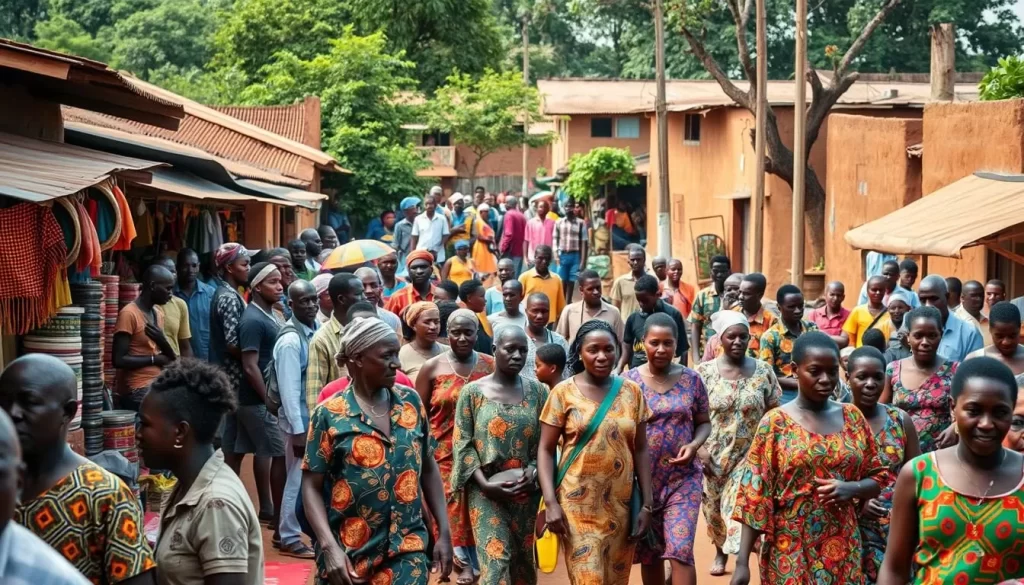
Discovering the Rich Tapestry of Languages
This country is home to a fascinating mix of languages. Chewa, the national language, is spoken by about half of the population, while English serves as the official language. Other prominent languages include Yao, Tumbuka, and Lomwe, each with its own unique history and regional significance.
These languages are not just tools for communication. They are a bridge to understanding the nation’s culture, beliefs, and traditions. Whether in schools, government offices, or local markets, the diversity of language spoken here reflects the unity and complexity of its people.
Why Language Matters
Language plays a crucial role in shaping identity and fostering connections. It influences education, business, and even government programs. For instance, initiatives to promote literacy and preserve native languages highlight their importance in national development.
Understanding this linguistic diversity helps you appreciate the country’s history and its journey toward independence. It also offers insight into the daily lives of its people, from family gatherings to community events.
| Language | Percentage of Speakers |
|---|---|
| Chewa | 25.2% |
| Tumbuka | 20.4% |
| Lomwe | 17.9% |
| Yao | 15.3% |
As you explore this linguistic landscape, you’ll discover how language connects people across regions and generations. It’s a journey that reveals the heart and soul of this vibrant nation.
Malawi: Official and widely spoken languages
In this vibrant land, language serves as a bridge connecting diverse communities. Nearly half of the population speaks Chichewa, the national language, while English is used in education and government. This dual linguistic system reflects the country’s rich cultural heritage and modern development.
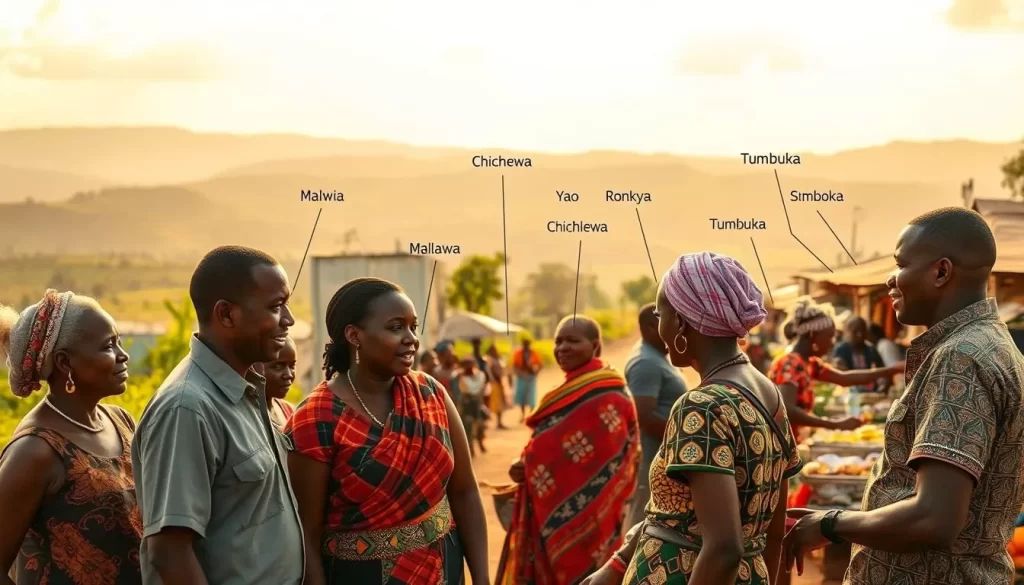
Language distribution varies across urban and rural settings. In cities, English is more prevalent, especially in schools and workplaces. Rural areas, however, often rely on Chichewa and other native tongues for daily communication. This contrast highlights the adaptability of the population to different linguistic environments.
Here’s a quick look at key demographic trends:
- Chichewa is spoken by approximately 50% of the population.
- English is the medium of instruction in schools, though implementation varies.
- Regions near Lake Malawi show higher language diversity, with multiple dialects coexisting.
Understanding these patterns helps you appreciate the role of language in shaping daily life. Whether in government offices or local markets, the way people communicate reflects their identity and beliefs. This linguistic landscape offers a window into the heart of the continent.
Exploring Chichewa: The National Language of Malawi
Chichewa, the national language, connects millions across the region with its rich history and cultural significance. Spoken by over 16 million people, it serves as a unifying force in daily life and communication. Its roots trace back to the mid-fifteenth century when the Chewa people migrated to the Lake Malawi region.
Historical Background and Promotion
Chichewa’s journey began during the Bantu Migration, driven by the search for fertile land and trade opportunities. Over time, it evolved into a vital part of the region’s identity. The government actively promotes it through educational programs and media initiatives, ensuring its continued relevance.
One of the earliest records of the language is the Dictionary of the Kiniassa Language, compiled in the mid-1800s. Today, it’s used in schools, government, and media, making it a cornerstone of public life.
Regional Variations and Media Impact
Chichewa’s usage varies across regions. In urban areas, it’s spoken by up to 80% of the population, while rural areas see nearly universal adoption. Regional dialects add depth to its linguistic diversity, reflecting local traditions and customs.
Media plays a crucial role in spreading the language. Radio and television programs in Chichewa reach millions, fostering a sense of unity among speakers. These efforts ensure that the language remains vibrant and accessible to all.
Embracing English: The Official Language of Malawi
English plays a pivotal role in this African nation, blending colonial history with modern communication needs. Introduced by missionaries and colonial administrators, it became the official language, shaping education, government, and business.
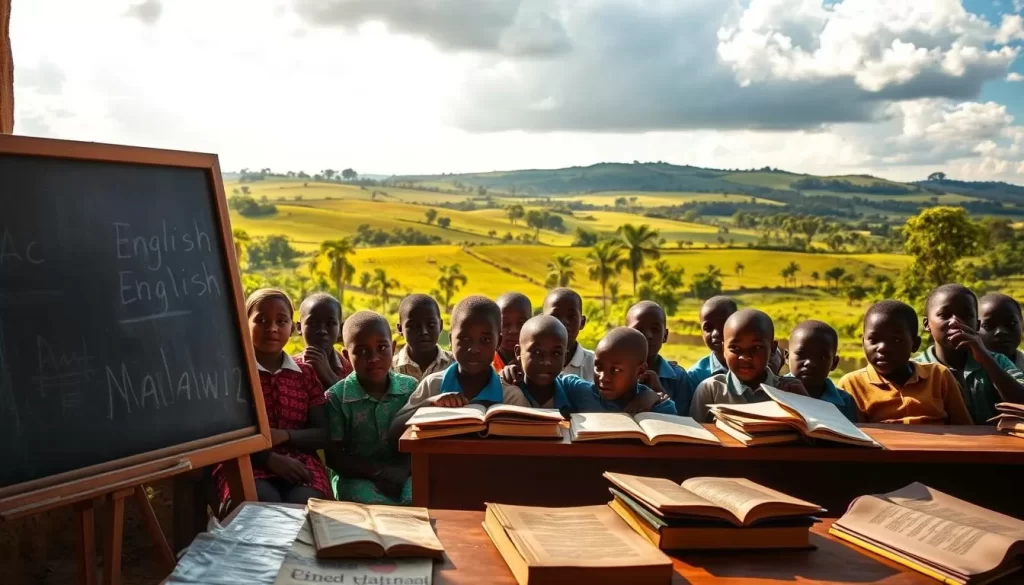
Colonial Influence and Modern Use
English was established during the colonial era, primarily for administrative purposes. Over time, it became a cornerstone of the educational system. Today, it is the medium of instruction in schools and the primary language for government communication.
In modern times, English is taught as a second language in government schools. It is also essential in legal proceedings and international business. This dual role highlights its continued relevance in daily life.
Here’s a quick look at how English is used across different sectors:
| Sector | Usage |
|---|---|
| Education | Medium of instruction |
| Government | Official communication |
| Business | International trade |
| Legal | Court proceedings |
Understanding the role of English helps you appreciate its impact on the country’s development. It bridges the gap between history and modernity, offering a unique perspective on cultural evolution.
Regional Voices: Yao, Tumbuka, and Other Native Languages
Across the diverse regions of this nation, languages like Yao and Tumbuka echo the voices of their communities. These native tongues are more than just means of communication—they are symbols of identity and heritage. For instance, the Yao language, spoken by approximately 2 million people, is deeply rooted in the areas around Lake Malawi.
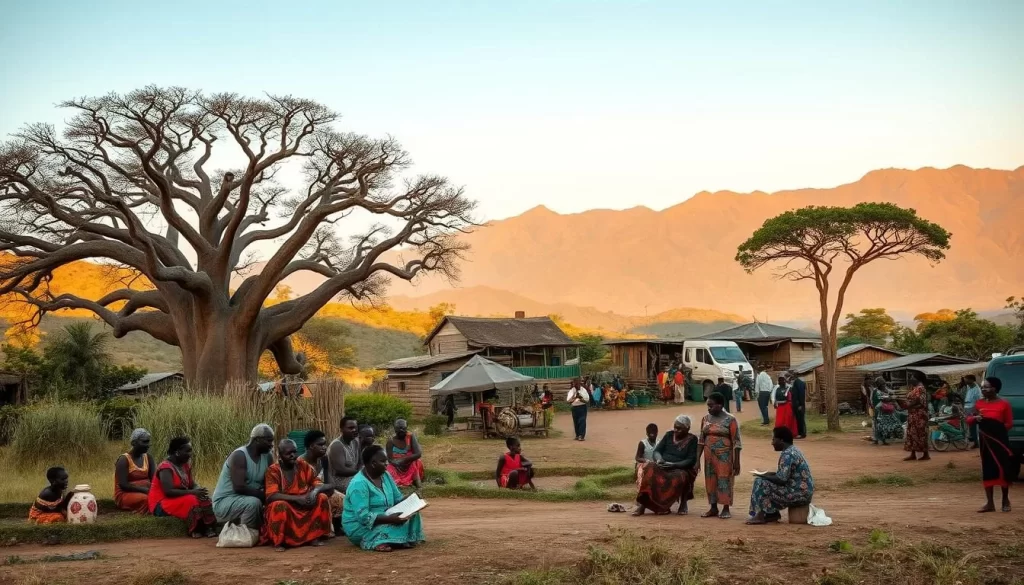
The Yao Language and Its Dialects
The Yao language is known for its rich dialects, each reflecting the unique traditions of its speakers. It plays a significant role in cultural practices, from storytelling to ceremonies. Around Lake Malawi, Yao is a vital part of daily life, connecting generations and preserving history.
Tumbuka’s Resurgence and Challenges
Tumbuka, traditionally spoken in the north, is experiencing a cultural revival. After years of marginalization, efforts like radio programs and publications are bringing it back into the spotlight. However, challenges remain, such as the lack of standardized teaching materials.
Both Yao and Tumbuka contribute to the country’s linguistic diversity. They remind us that every person has a story, and every language is a window into their world. For more on how these languages shape cultural identity, explore this resource.
Language and Culture in Malawi
Language is more than just words; it’s a reflection of identity and heritage. In this diverse country, the way people communicate reveals their values, traditions, and history. From daily conversations to cultural ceremonies, every word carries meaning and connects individuals to their roots.
How Language Shapes Cultural Identity
Language plays a pivotal role in forming cultural identity. It influences how a person sees the world and interacts with others. For example, Chichewa, spoken by millions, is not just a means of communication but a symbol of unity and pride.
Linguistic expression also shapes social behavior. Greetings, proverbs, and storytelling traditions reflect the values of respect, community, and shared history. These elements are deeply embedded in the culture and passed down through generations.
Avoiding Stereotypes Through Respectful Communication
Cultural generalizations can lead to harmful stereotypes. To avoid this, it’s essential to understand the nuances of each language and its context. For instance, while Chichewa is widely spoken, regional dialects like Yao and Tumbuka carry their own unique cultural significance.
Respectful communication involves empathy and curiosity. Instead of making assumptions, ask questions and listen actively. This approach fosters mutual understanding and breaks down barriers.
Here are some actionable tips for respectful dialogue:
- Learn basic phrases in the local language to show respect.
- Be mindful of cultural differences in body language and gestures.
- Avoid making broad generalizations about a community or its traditions.
By recognizing the diversity within cultures, you can engage in meaningful and inclusive conversations. For more insights into Malawi’s rich cultural heritage, visit this resource.
Language in Education and Government
Education and government systems rely heavily on language to shape national identity. In this country, English dominates formal settings, while local languages are preserved through literacy programs and media initiatives. This dual approach reflects the balance between modern needs and cultural heritage.
Curriculum Integration and Literacy Efforts
Language is deeply integrated into the national curriculum. English serves as the medium of instruction from standard one, a policy introduced in 2014. However, many students learn faster in their mother tongue, which is supported during the first four years of primary education.
Literacy initiatives aim to preserve indigenous languages. Programs like radio broadcasts and community workshops promote Chichewa, Yao, and Tumbuka. These efforts ensure that every person can connect with their cultural roots while gaining modern skills.
Media Initiatives and Language Preservation
Media plays a vital role in sustaining linguistic diversity. Radio and television programs in local languages reach millions, fostering unity and understanding. For example, Chichewa is widely used in educational programming, helping students grasp complex concepts more effectively.
Government policies also affirm English for official business, ensuring consistency in legal and administrative communication. This approach highlights the interconnected role of education and media in sustaining culture. For deeper insights, explore this study on language use in academic settings.
Diverse Dialects & Lesser-Known Languages
Beyond the well-known tongues, this nation’s linguistic map is dotted with hidden gems. From Lomwe to Nyakyusa-Ngonde, smaller communities preserve their unique dialects, adding depth to the country’s cultural richness.
Languages like Sena and Tonga are spoken by smaller groups but hold immense regional significance. For instance, Lomwe is prevalent in the southern regions, while Nyakyusa-Ngonde is concentrated near the northern borders. These dialects are not just means of communication but also symbols of identity.
Exploring Smaller Linguistic Communities
Each language carries its own history and cultural weight. Take Sena, for example, spoken by communities along the Shire River. It reflects their traditions, from storytelling to agricultural practices.
Preservation efforts are crucial for these dialects. Grassroots initiatives, such as community workshops and local media programs, help keep them alive. For instance, radio broadcasts in Tonga ensure its continued use among younger generations.
Here’s a quick look at the regional distribution of some lesser-known languages:
- Lomwe: Southern regions, approximately 1.5 million speakers.
- Nyakyusa-Ngonde: Northern borders, around 300,000 speakers.
- Sena: Shire River area, about 200,000 speakers.
These languages contribute to the nation’s cultural mosaic. They remind us that every person has a story, and every dialect is a window into their world. For more on the diversity of African languages, explore this resource.
Looking ahead, the future of these dialects depends on continued support. Educational programs and media initiatives play a vital role in ensuring their survival. By appreciating linguistic diversity, we celebrate the richness of human expression.
Conclusion
The linguistic heritage of this African nation tells a story of unity, diversity, and resilience. From the historical roots of Chichewa to the modern use of English, language has shaped the cultural and educational landscape of this country.
Chichewa, spoken by over half the population, remains a unifying force, while English serves as a bridge to global opportunities. Together, they reflect the balance between tradition and progress.
Government initiatives and media programs play a vital role in preserving indigenous tongues. These efforts ensure that every community’s voice is heard and valued. For a deeper dive into this nation’s cultural richness, explore this resource.
Understanding this linguistic diversity offers a window into the heart of its people. It’s a reminder that every word carries history, identity, and connection. Respecting and celebrating these differences enriches us all.
The above is subject to change.
Check back often to TRAVEL.COM for the latest travel tips and deals.
Here are some Tours & Sightseeing suggestions that might pique your interests!





